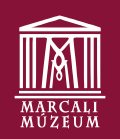The “predecessor” of the building was built in the 18th century, and meetings of the County Council were held in it between 1718 and 1752. In 1928, the current Courthouse was built by master builder László Csomós based on the plans of architect Lóránt Almási Balogh on the site of the “Big County Hall” (the old District Courthouse), which had been the seat of the Court after 1867. The land office was also located here.
The stone coat of arms was placed in the axis of the two-storey building with a central risalit and arched gable. In 1959, a memorial tablet was placed on its wall in honor of Gáspár Noszlopy (1820-1853), a freedom fighter hero of 1848/49.
The building of the District Prison built at the end of the 19th century was located behind the Courthouse. The two-storey prison was probably built by master builder Ferenc Sztelek Sr. The most tragic period of the building surrounded by high brick walls dates back to August 1919, when the White Guards tortured former members of the directorate who were being held here, and executed 25 of them. In commemoration of this and based on the collections of the local history movement started in the high school, the Local History and Labor Movement Museum of Marcali was opened in the former prison building in 1972. In front of the institution stood a statue commemorating those executed. The building complex was renewed in 2010 as part of the program “Pécs, European Capital of Culture”. Since 2011, the Marcali Museum, the Marcali Cultural and Recreational Centre as well as the Tavi Television have been housed in the complex, which bears the fancy name Cultural Promenade.
1.| The building of the Big County Hall in the reconstruction drawings (Ink-drawing of László Csomós, 1960)
2.| The building was the seat of the District Court from 1871 (Picture postcard, around 1910)
3.| The District Court built in 1928 (Picture postcard, 1930s)
4.| The building complex of the Cultural Promenade (Photograph: József Ilácsa, 2018)
5.| The work entitled Martyr’s Burial by Sándor Kiss in front of the expanded museum building (Picture postcard detail, 1981)
Kezdőlap - Info boards - District Courthouse in Marcali

Fenntartó: Marcali Város Önkormányzata – marcali.hu
Marcali Múzeum. 2020. Minden jog fenntartva.